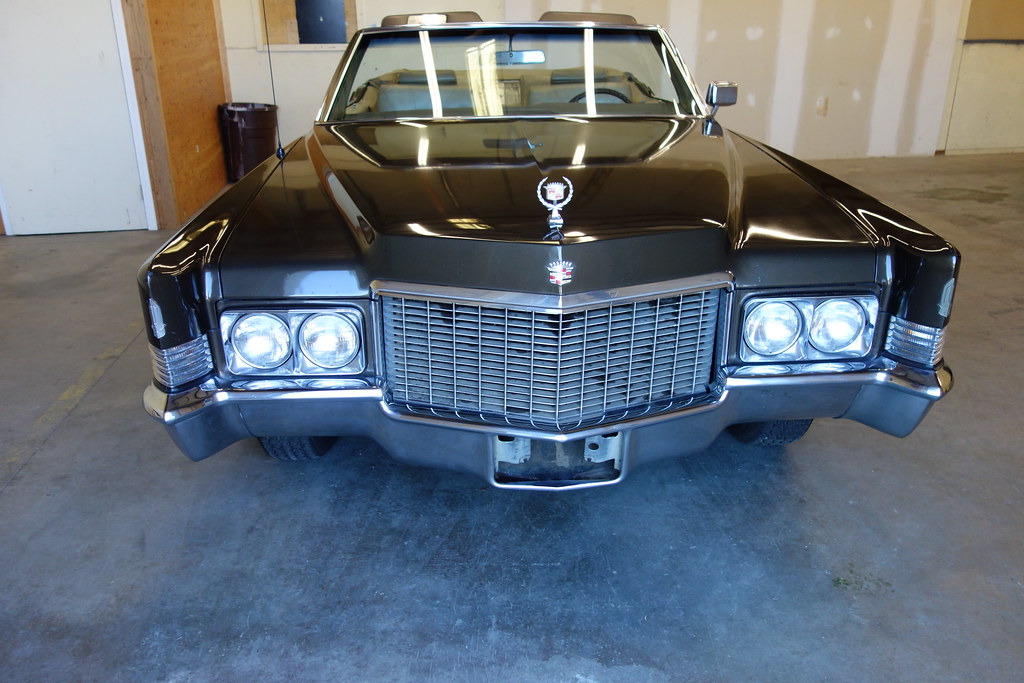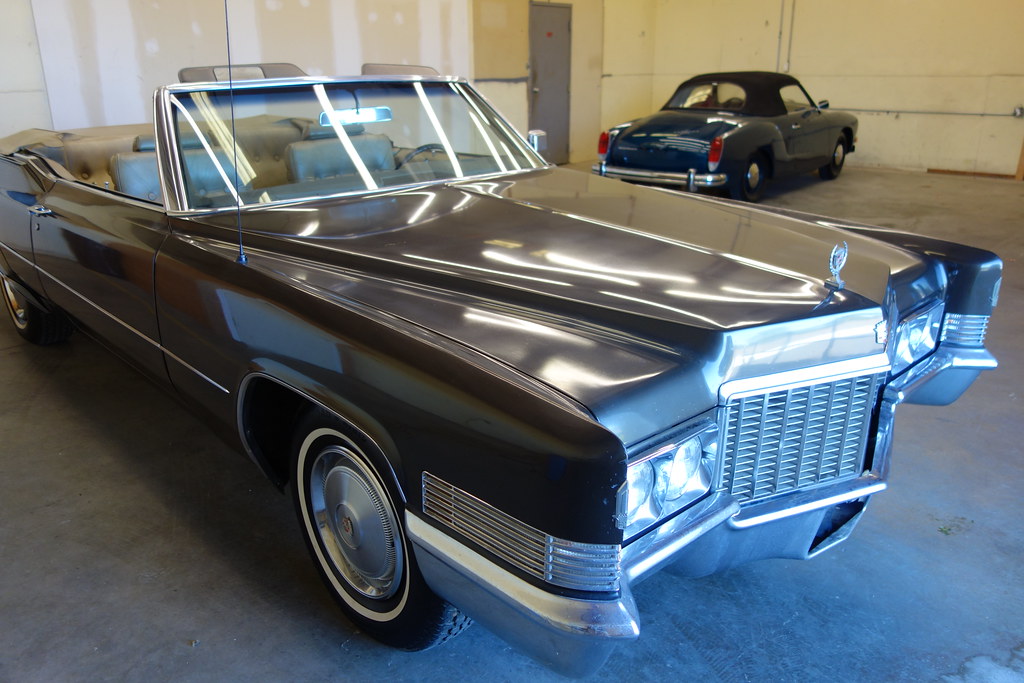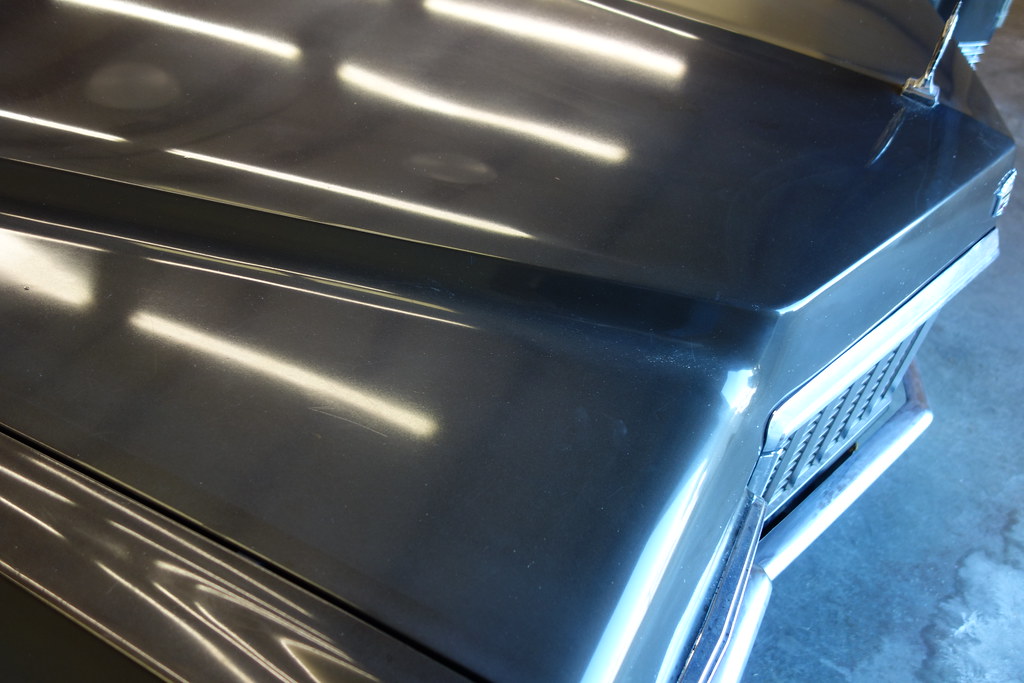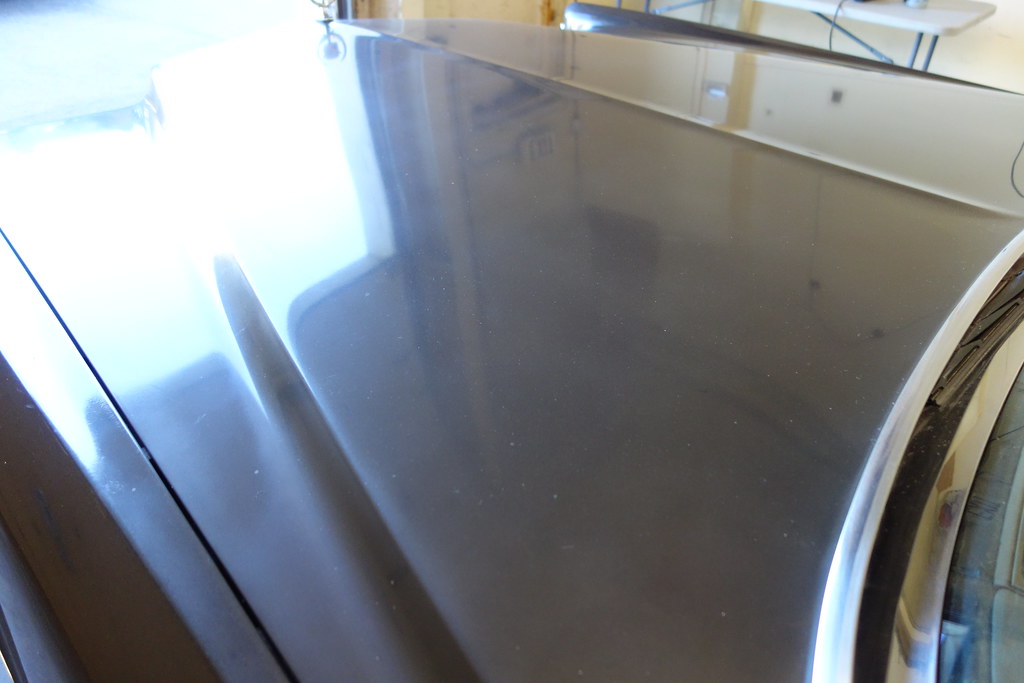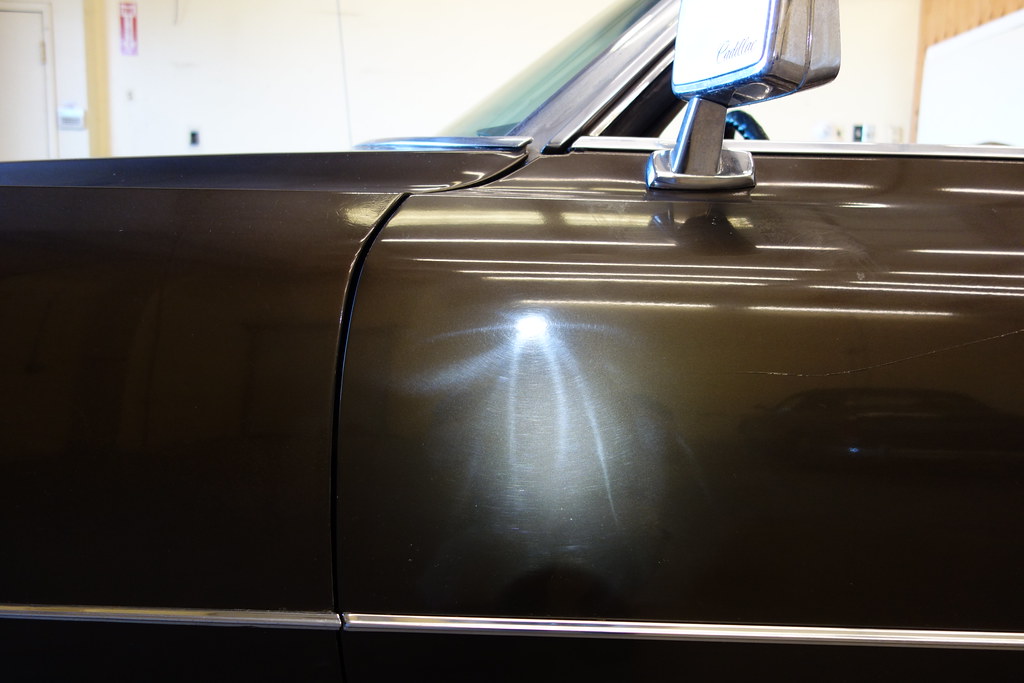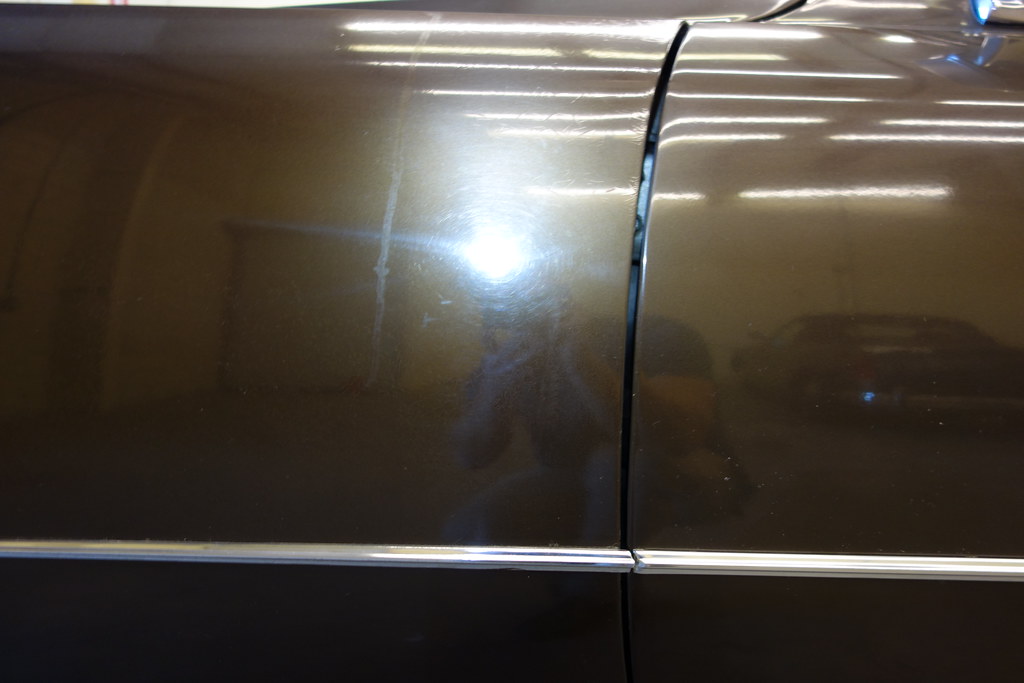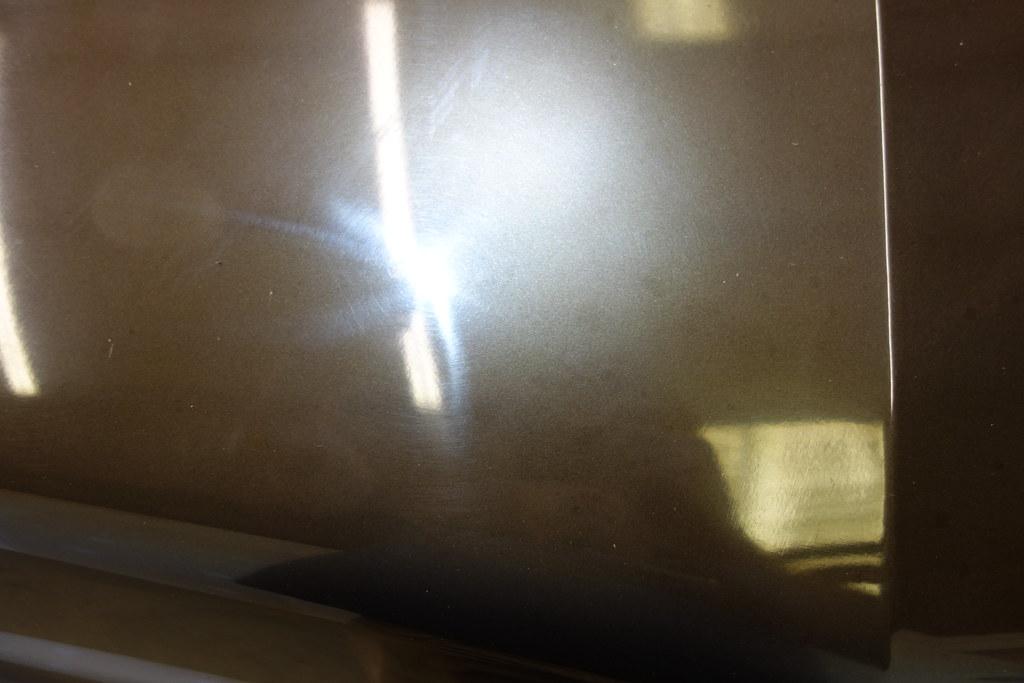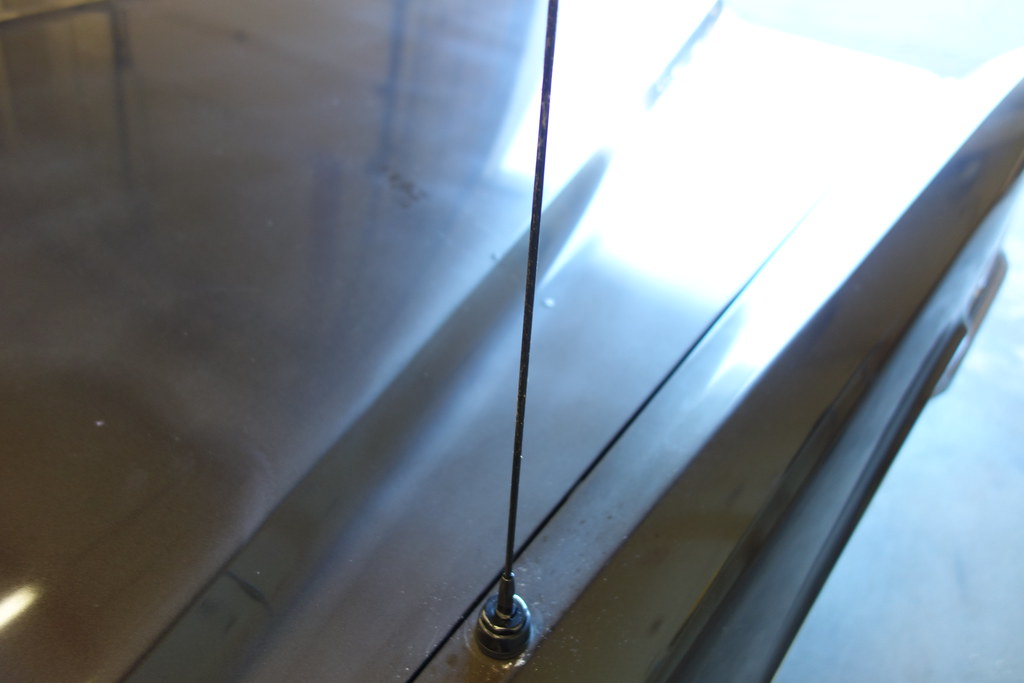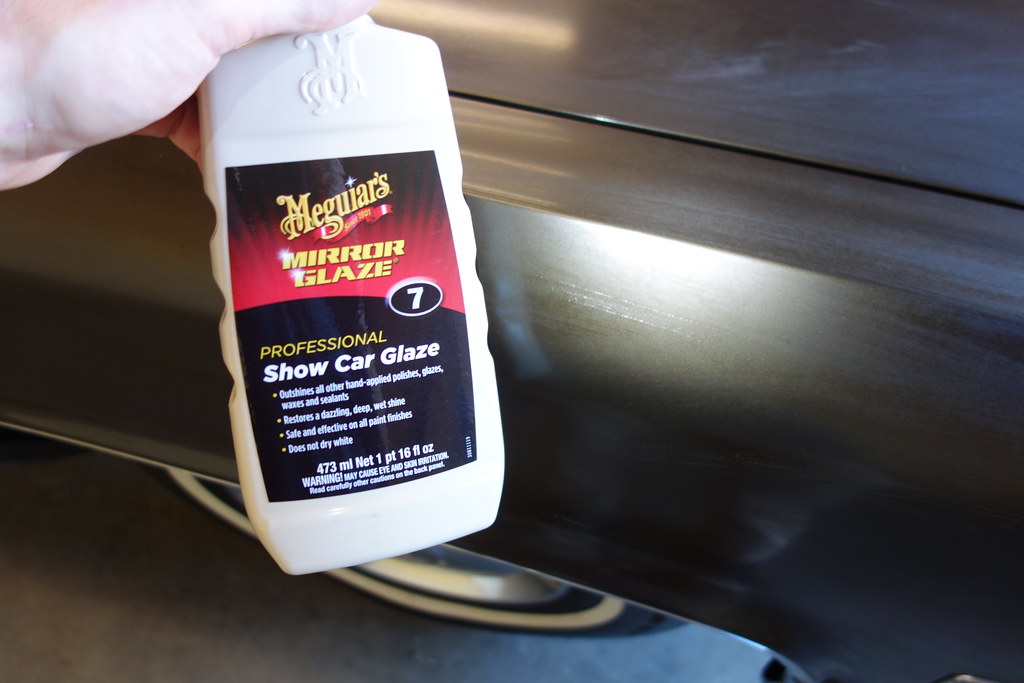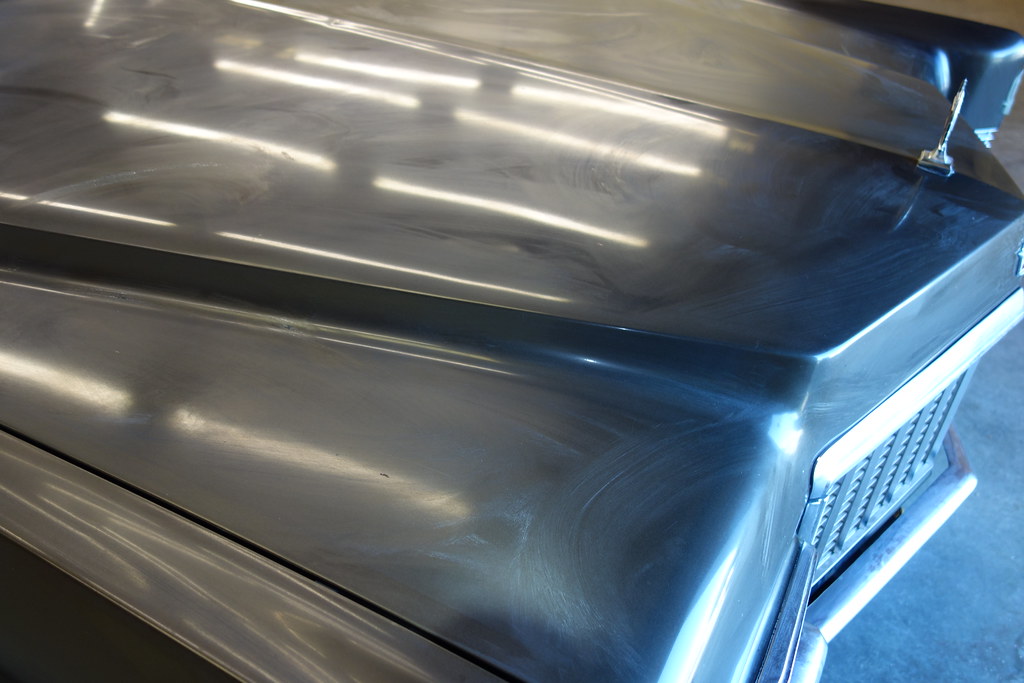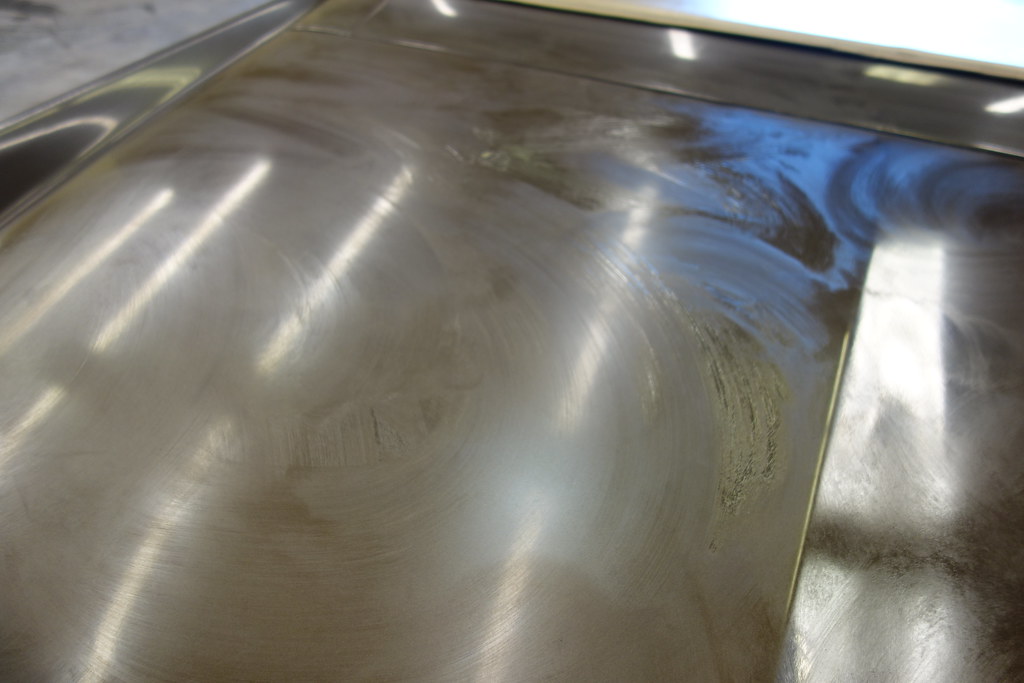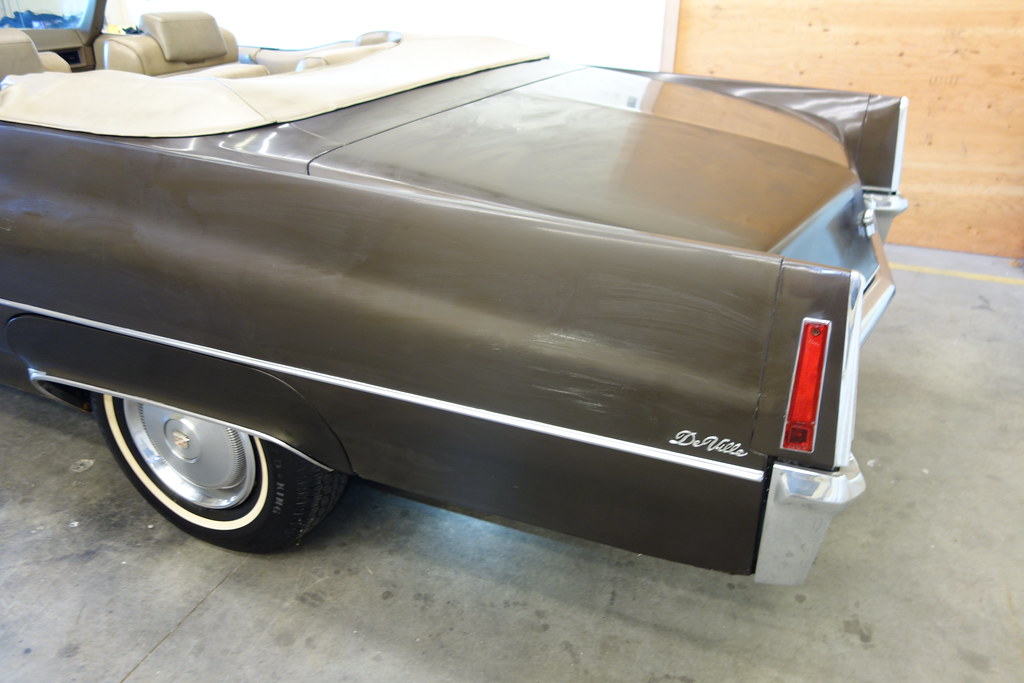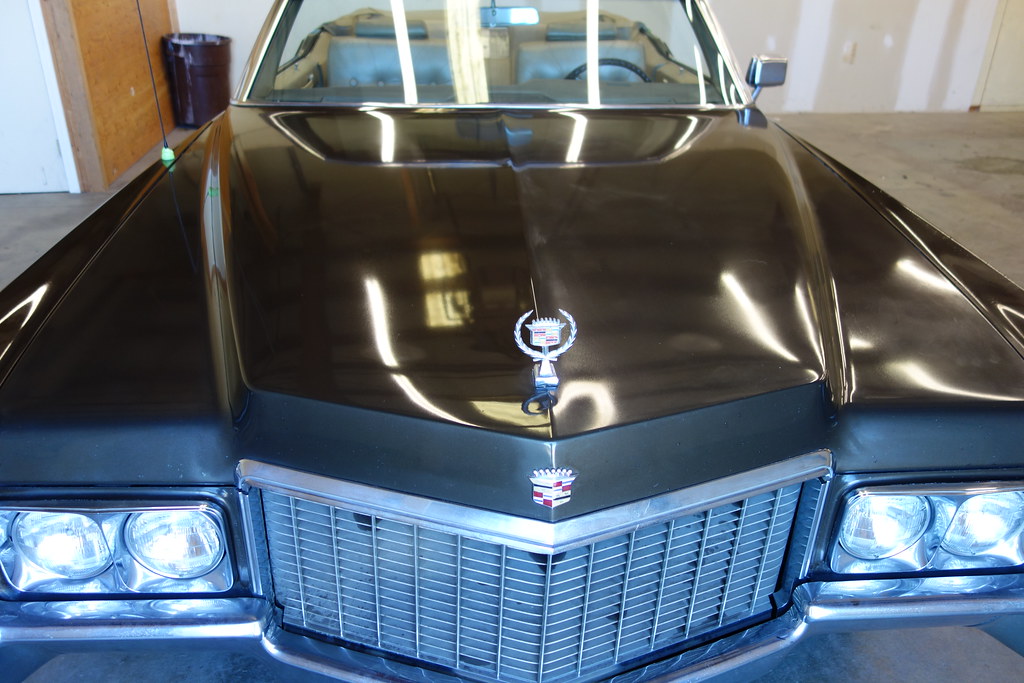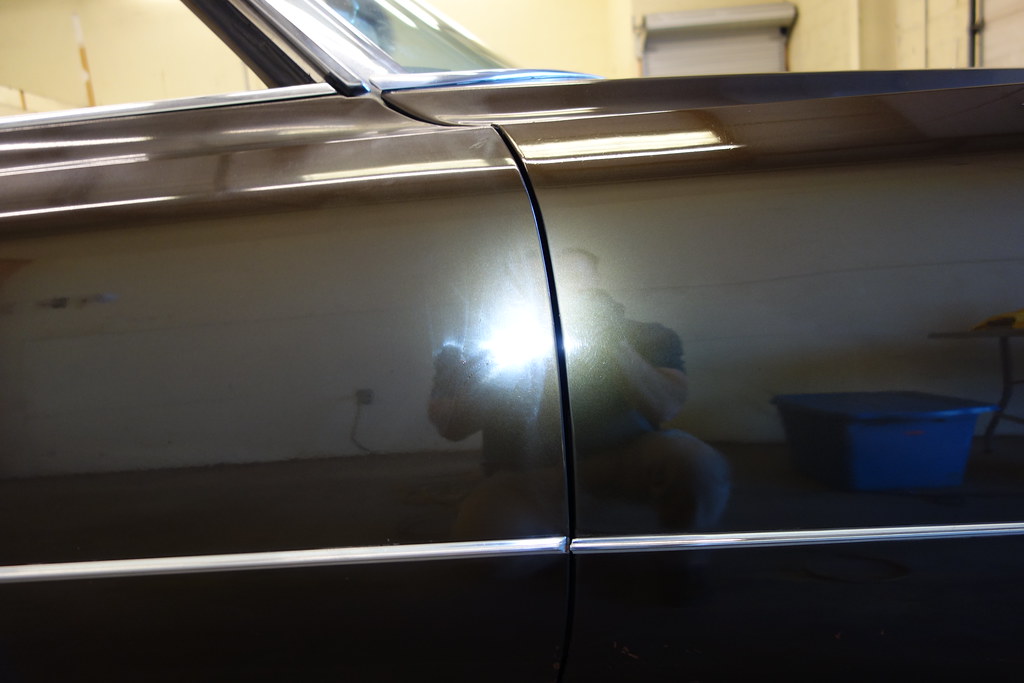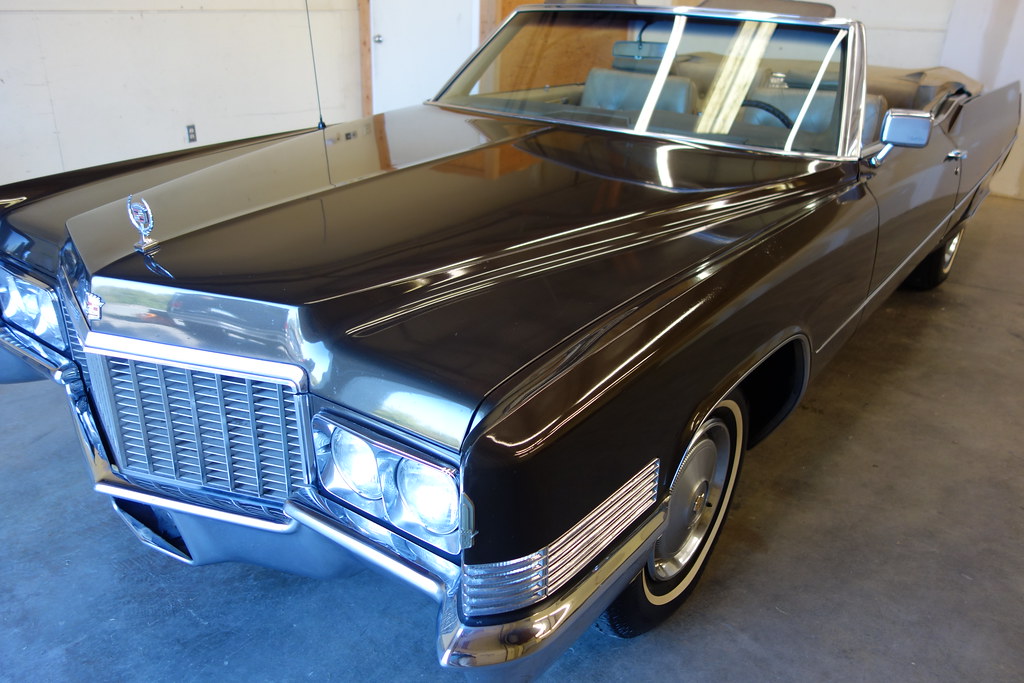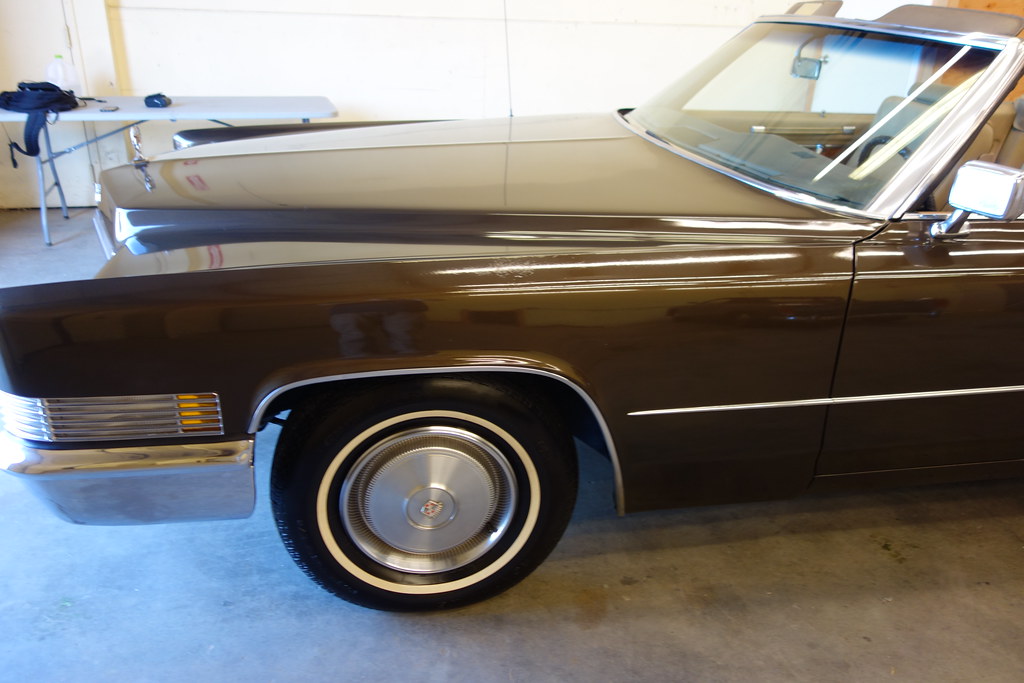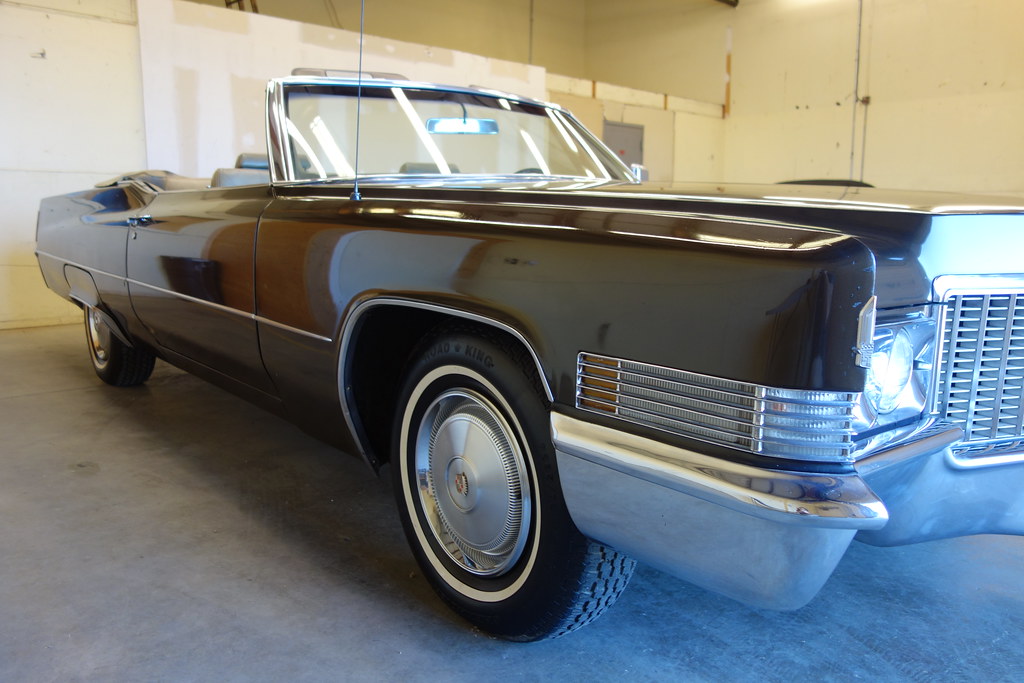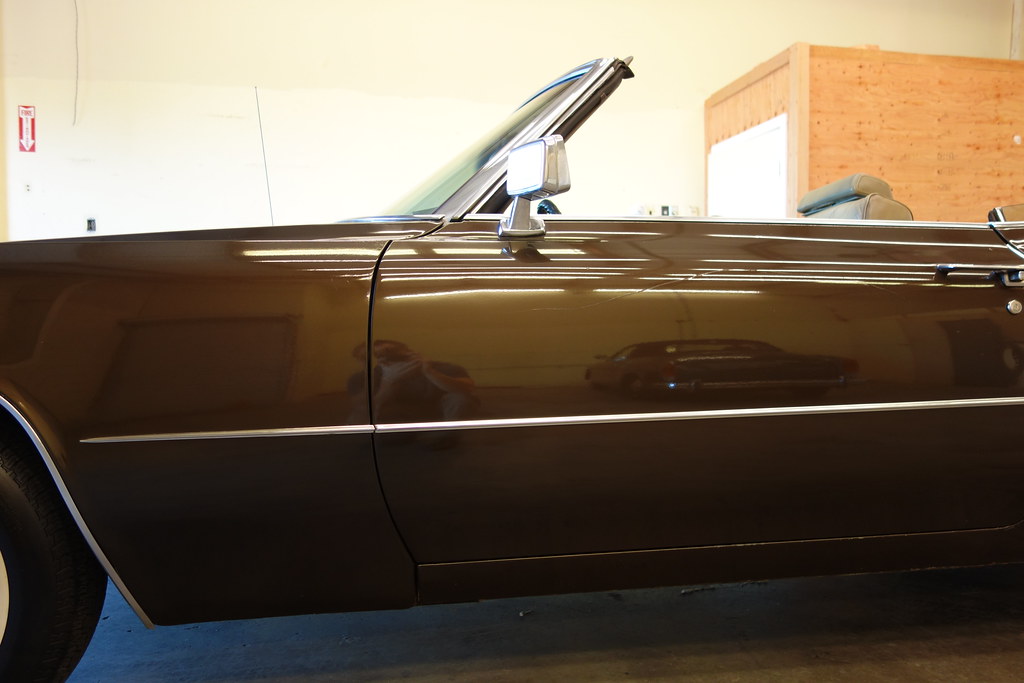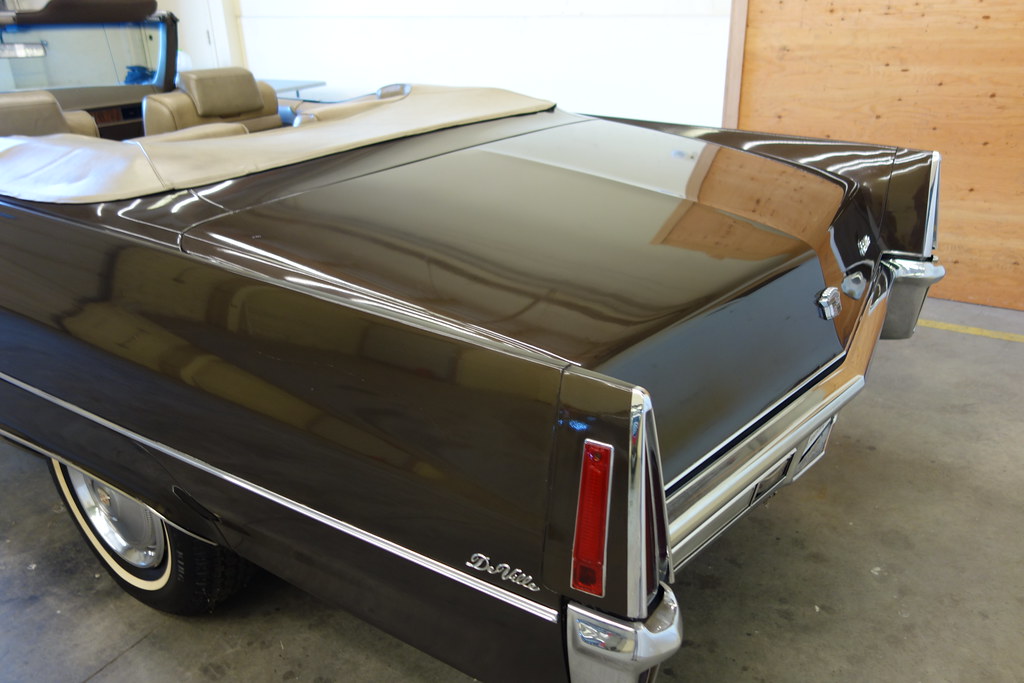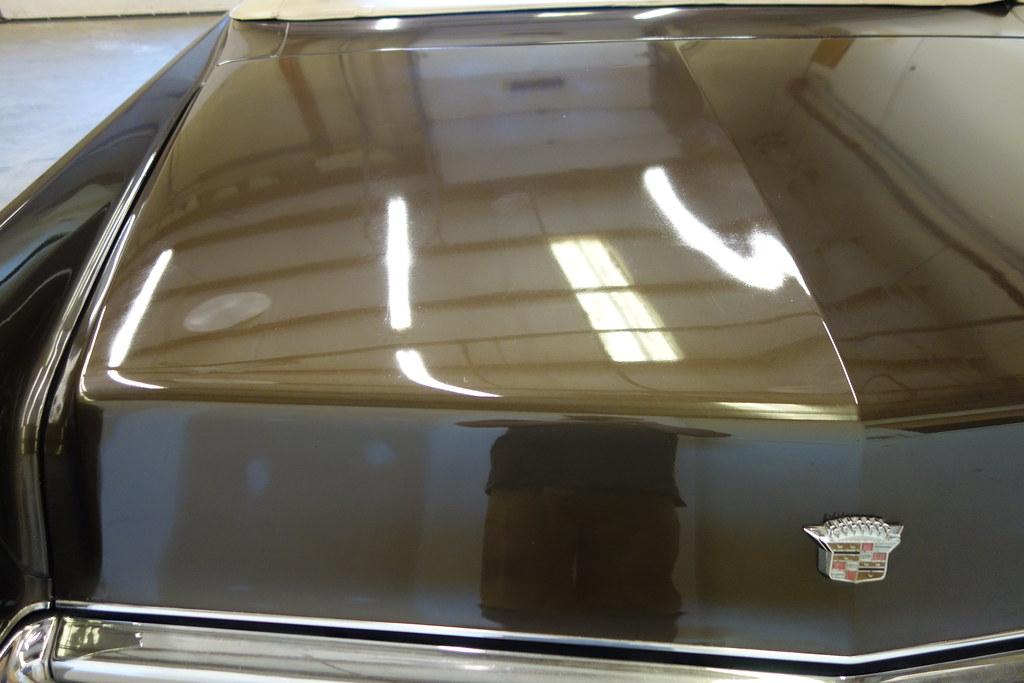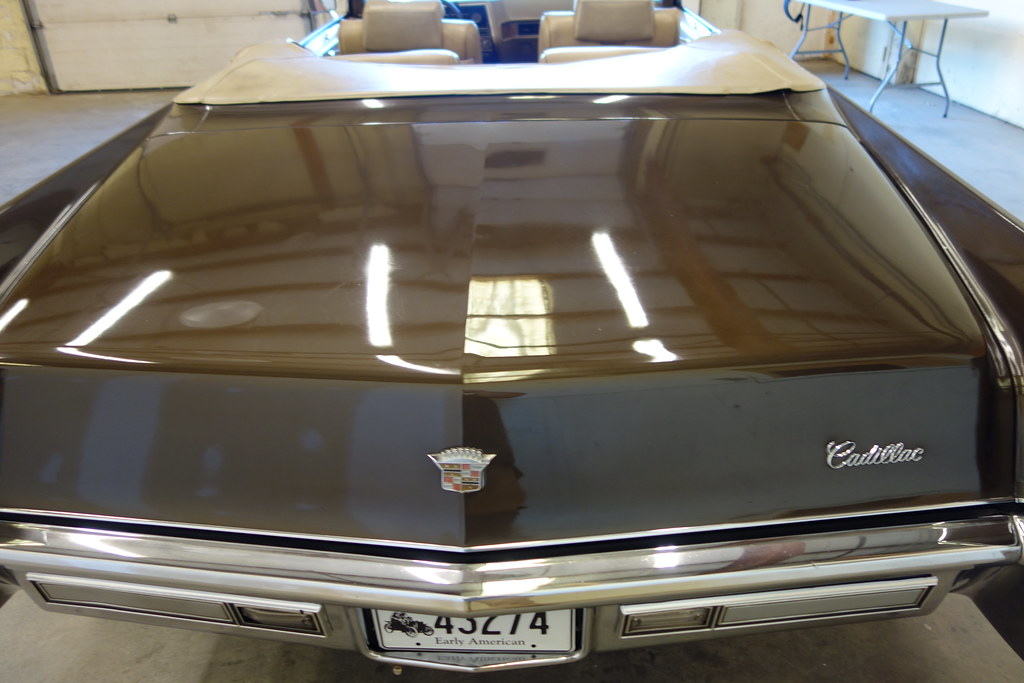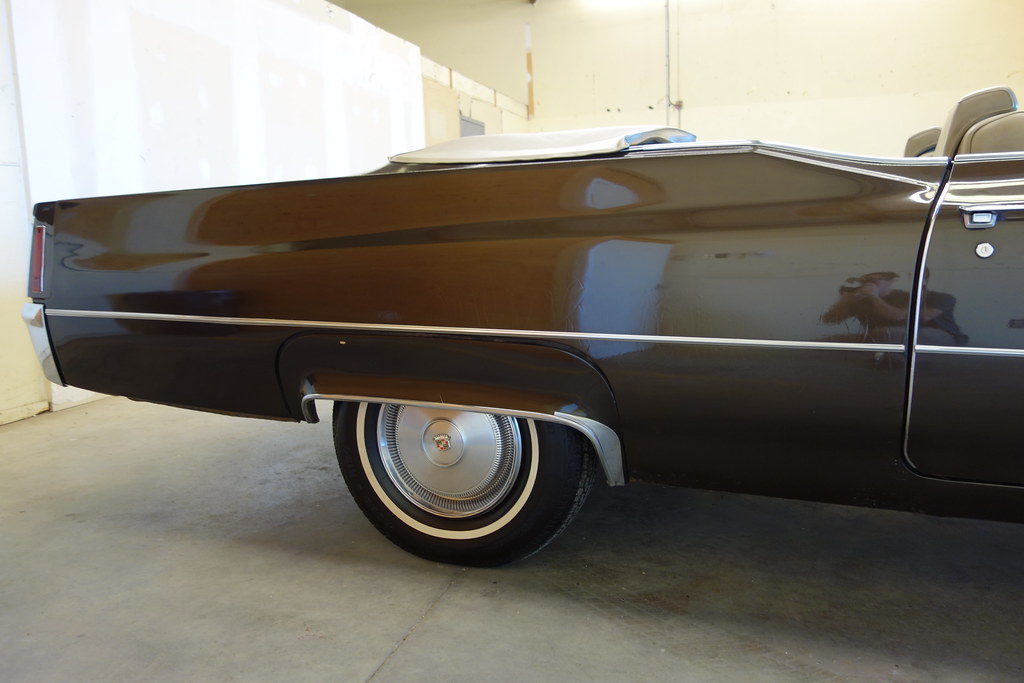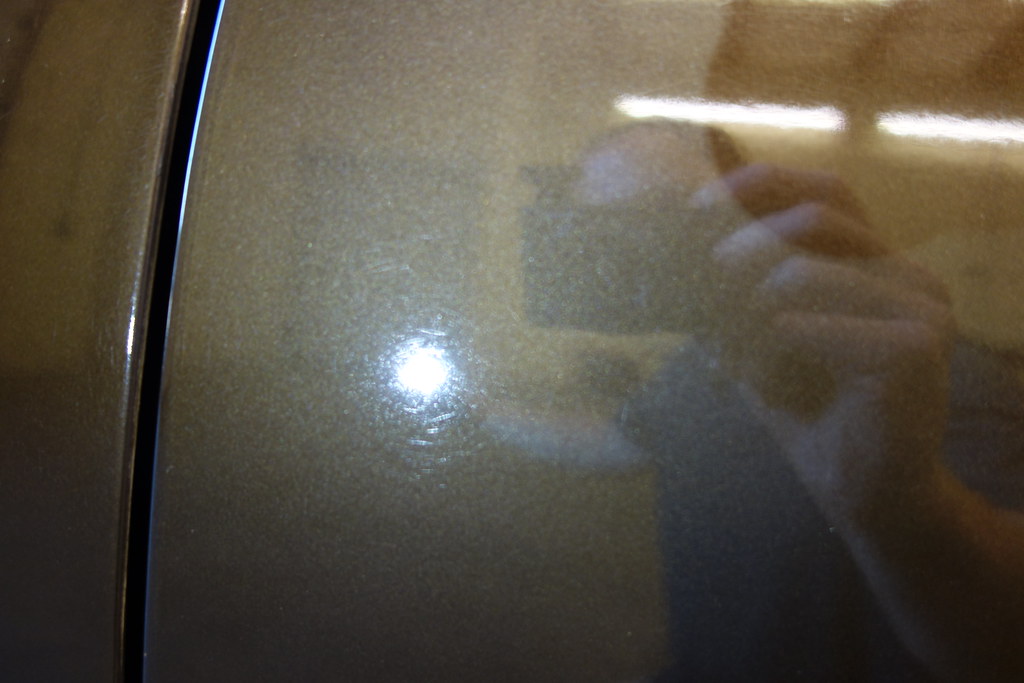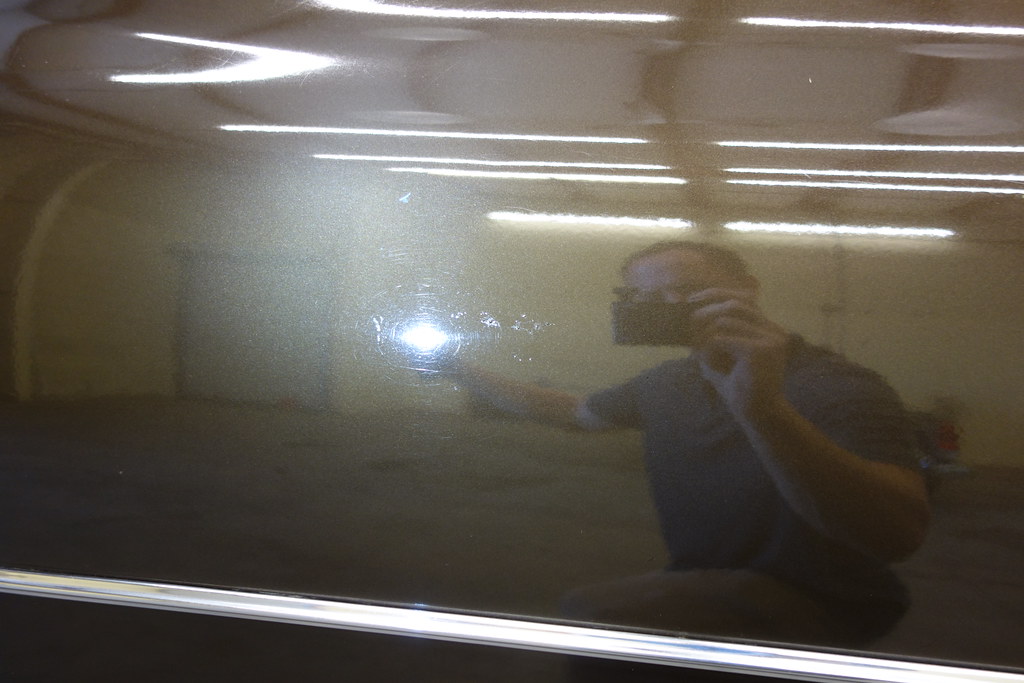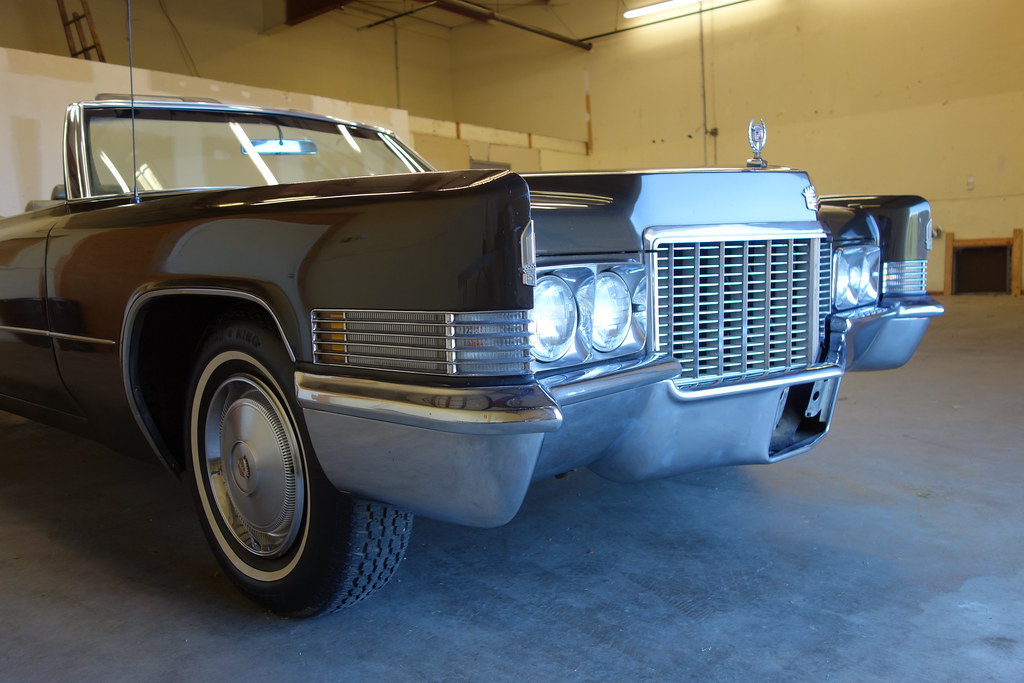This 1970 Cadillac Deville was brought to my attention as a possible candidate for our multi-step antique paint restoration process. The car had been in storage for some years prior to being bought by its current owner and was in dire need of attention, showing fading of the single-stage paint, marring and light scratches everywhere, plus some unsightly swirls marks from a previous detailer’s failed attempts to restore the finish. The owner notified me that this Cadillac was sporting all original paint, which meant that a careful balance would have to be found between preserving the thickness of the thin and soft single stage paintwork and removing enough defects and oxidation to bring the finish back to life. The poor starting condition of this Deville can be seen in the pictures below:
Before:
Heavy swirling was present on most panels:
During:
After a wipedown with Optimum No-Rinse a thick coat of Meguiar’s #7 glaze was applied to the paint. This is a crucial step in the process of restoring a finish of this age, as the paint’s lack of a clear coat makes it porous and more susceptible to environmental damage. Over time the paint’s own oils are lost and must be replenished with a product designed specifically for single stage enamel and lacquer finishes, such as #7.
Meguiar’s #7 was allowed to penetrate the paintwork it was removed and multiple pad/polish combinations on the Rupes 21 polisher were tested to determine what would safely removed the oxidation and moderate swirls without causing excessive heating of the paint or risk of damage to panel edges. Here a combination of HD Speed on Lake Country black foam finishing pads (performed on the passenger side of the hood) showed a significant improvement in the finish:
This combination also yielded a great result on the fender, and would be repeated over the entire car:
After:
After the restoration process the paint glowed and showed a large reduction in marring, with no rotary swirls:
